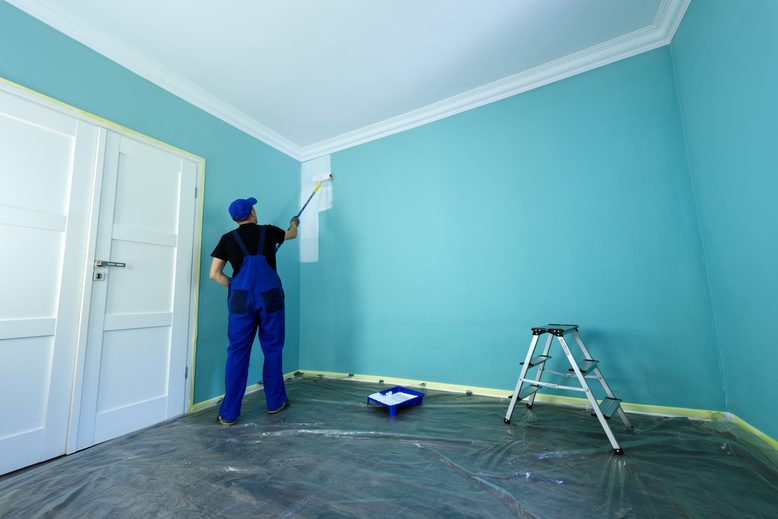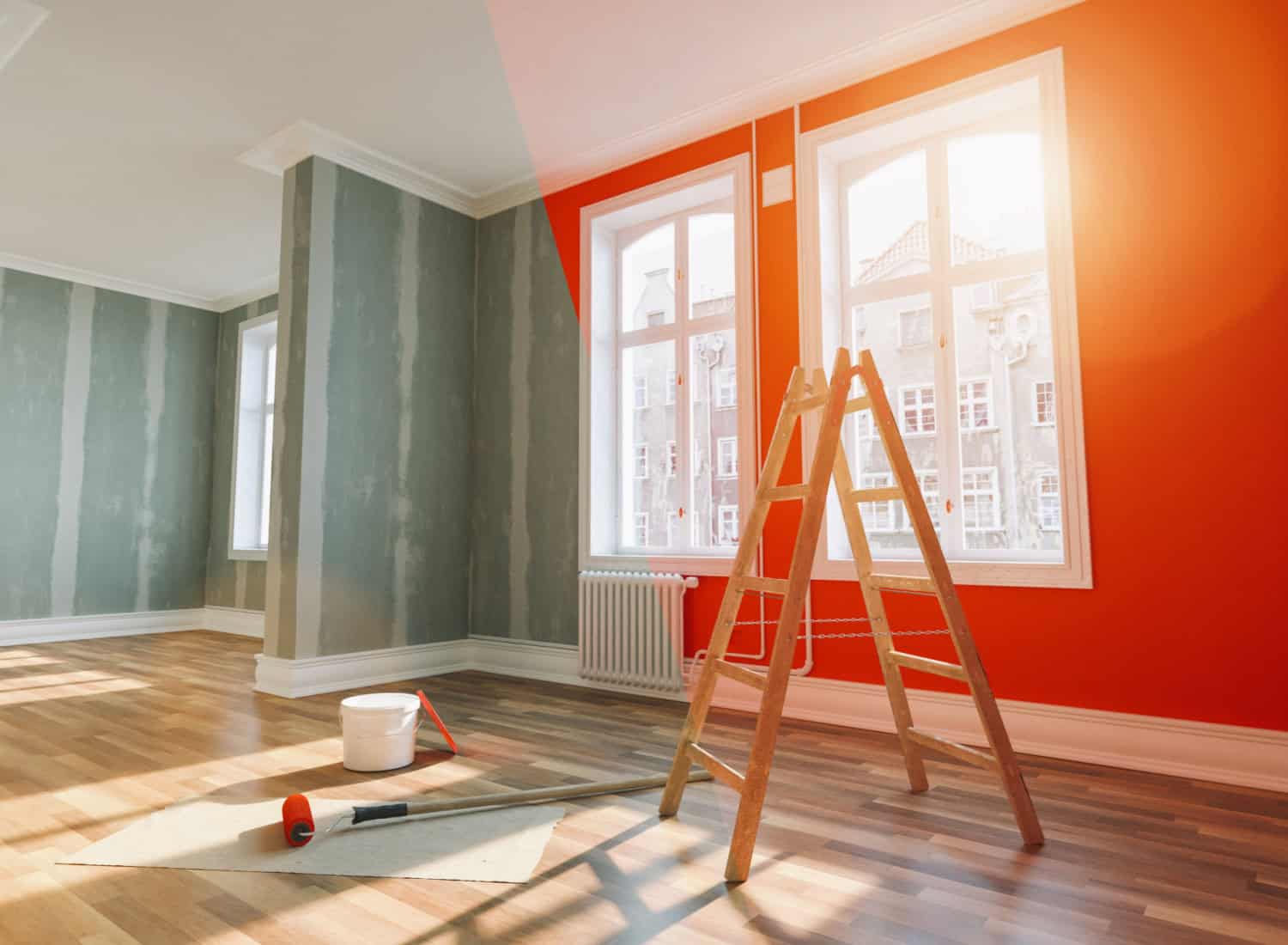Enhance Your Interior Design With Comprehensive Color Consultation
The integration of color assessment into indoor style offers a special possibility to improve and boost the emotional and visual vibration of an area. By engaging with a seasoned color professional, you can navigate the intricacies of shade selection, making certain that your options not only complement architectural attributes but likewise reverberate with personal design and mental effect.
Benefits of Color Examination

In addition, shade appointment aids in maximizing all-natural light and optimizing spatial perception. Lighter tones can make a space appear even more extensive, while darker shades develop an intimate setting. Cleveland Metro Painting Specialists. This calculated application of color can significantly affect the total atmosphere of any type of indoor room
Additionally, expert consultants possess a comprehensive understanding of ageless classics and current fads, making sure that the picked colors will remain enticing in time. This foresight can save customers from pricey redesigns in the future. Lastly, color consultation encourages clients by giving them with a clear vision and direction, promoting self-confidence in their layout selections and eventually causing a much more rewarding and effective interior decoration outcome.
Understanding Color Psychology
The relevance of shade psychology in indoor design can not be overemphasized, as it looks into the emotional and emotional effects that numerous hues can stimulate in individuals. Shades can influence mood, behavior, and also efficiency, making them an important factor to consider in any kind of design task.
As an example, warm shades such as red, orange, and yellow are typically related to energy and warmth. They can boost feelings of exhilaration and comfort, making them appropriate for social areas like living cooking areas or rooms. Alternatively, amazing colors like blue, green, and purple tend to stimulate peace and harmony, making them excellent for rooms or meditation locations.
Furthermore, making use of neutral tones can produce a well balanced atmosphere by enabling the bolder shades to stand out without overwhelming the senses. Comprehending these mental effects allows developers to produce spaces that not just look aesthetically pleasing but likewise promote emotional well-being.
Including shade psychology right into indoor layout includes a thoughtful choice of tones customized to the desired feature of each area, inevitably boosting the general experience for its owners. This awareness is essential for attaining a practical and harmonious interior atmosphere.
The Color Wheel Explained
It makes up key shades-- red, blue, and yellow-- that can not be created by blending other shades. Tertiary colors result from blending a primary and an additional shade, leading to hues such as red-orange and green.
The color wheel aids developers realize the partnerships between colors, consisting of corresponding, analogous, and triadic schemes. Corresponding shades, positioned opposite each other on the wheel, create vibrant contrasts that can energize a space.
Utilizing the color wheel in interior decoration not only enhances visual allure however likewise evokes certain feelings and atmospheres, making it a vital reference for color consultation. Understanding these partnerships ultimately encourages designers to develop spaces that are both aesthetically captivating and useful.
Selecting the Right Combination
An appropriate color system can merge a space, boost its features, and stimulate desired emotions. Different rooms offer varied features and require palettes that mirror their desired usage; for instance, relaxing colors such as soft blues or greens function well in bedrooms, advertising leisure.
Next, you could look here take right into account the natural light available. Light can drastically change exactly how colors appear, so it is necessary to analyze the area at different times of the day. Additionally, consider existing building components and furnishings. A harmonious palette must match these attributes, producing a cohesive appearance throughout the room.
When picking colors, make use of the 60-30-10 guideline, which recommends that 60% of the room should be a leading color, 30% a second shade, and 10% an accent color. This proportion ensures equilibrium and aesthetic rate of interest (Cleveland Metro Painting Specialists). Lastly, example colors on the wall surfaces before devoting, as this enables you to see how the tones communicate with one another and the general atmosphere they create in your interior decoration task.
Dealing With a Color Expert

When functioning with a color specialist, the procedure usually begins with a preliminary assessment. Throughout this conference, you'll discuss your vision, preferences, and the existing components in your area. The consultant will certainly assess your requirements and might advise details shade palettes that line up with your objectives.
After establishing an instructions, the specialist will his explanation certainly supply examples and visual help to help you imagine the proposed color pattern. This step is crucial, as colors can show up differently under varying lights conditions.
In addition, a color consultant can lead you in picking corresponding furnishings, art work, and accessories to balance with your chosen scheme. By teaming up carefully, you can accomplish a refined visual that elevates your interiors and develops an inviting environment. Ultimately, the knowledge of a color professional can significantly boost the overall effect of your style project.
Final Thought
In summary, extensive shade appointment serves as an important tool for boosting indoor design. By leveraging specialist understanding of color psychology and spatial dynamics, a tailored shade combination can be developed to evoke certain feelings and develop a harmonious atmosphere.
By involving with a seasoned color consultant, you can browse the complexities of shade choice, guaranteeing that your options not only enhance building features however additionally reverberate with personal design and mental effect. It makes up main colors-- red, blue, and yellow-- that can not be created by blending other shades.The shade wheel helps designers understand the relationships in between shades, consisting of complementary, comparable, and triadic systems.When selecting colors, utilize the 60-30-10 guideline, which recommends that 60% of the room must be a leading shade, 30% a second color, and 10% an accent shade. By leveraging specialist expertise of shade psychology and spatial characteristics, a customized shade scheme can be created to stimulate specific feelings and create an unified environment.